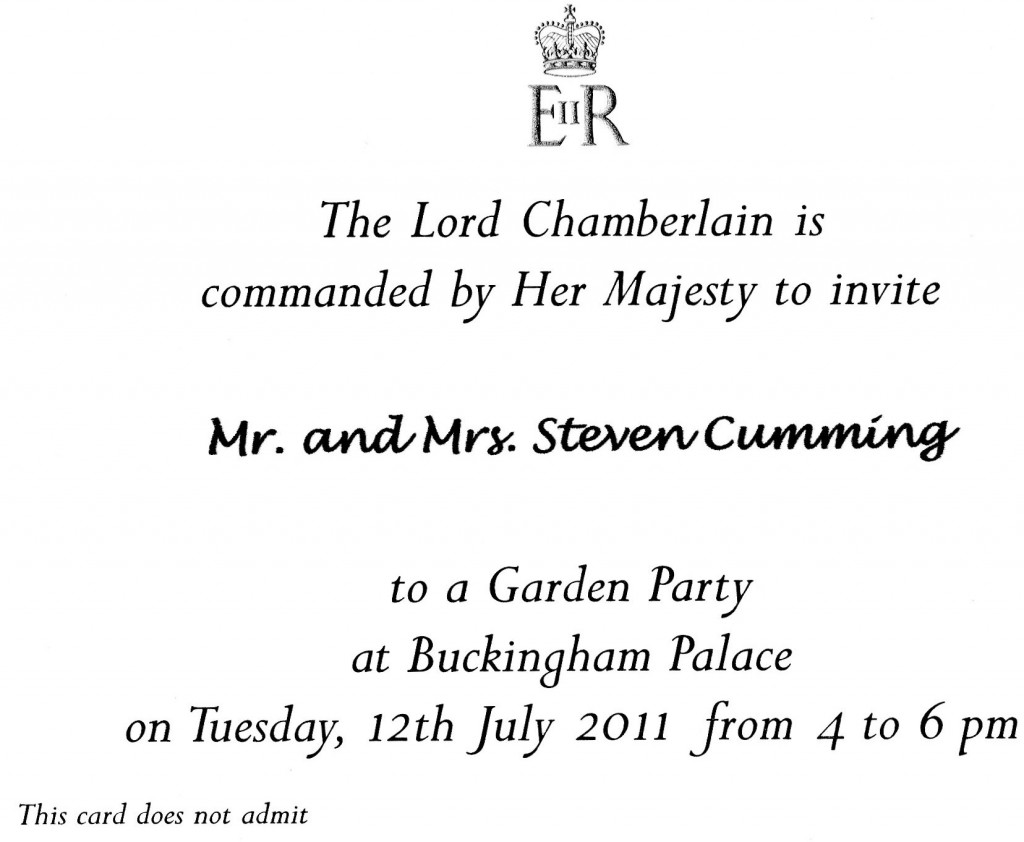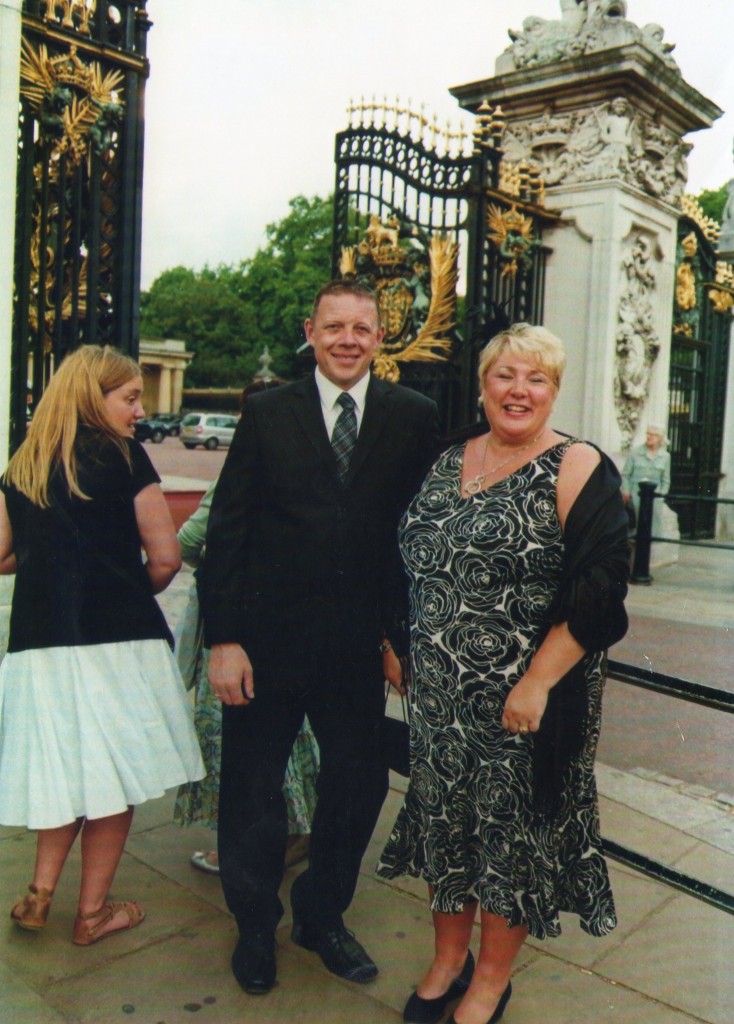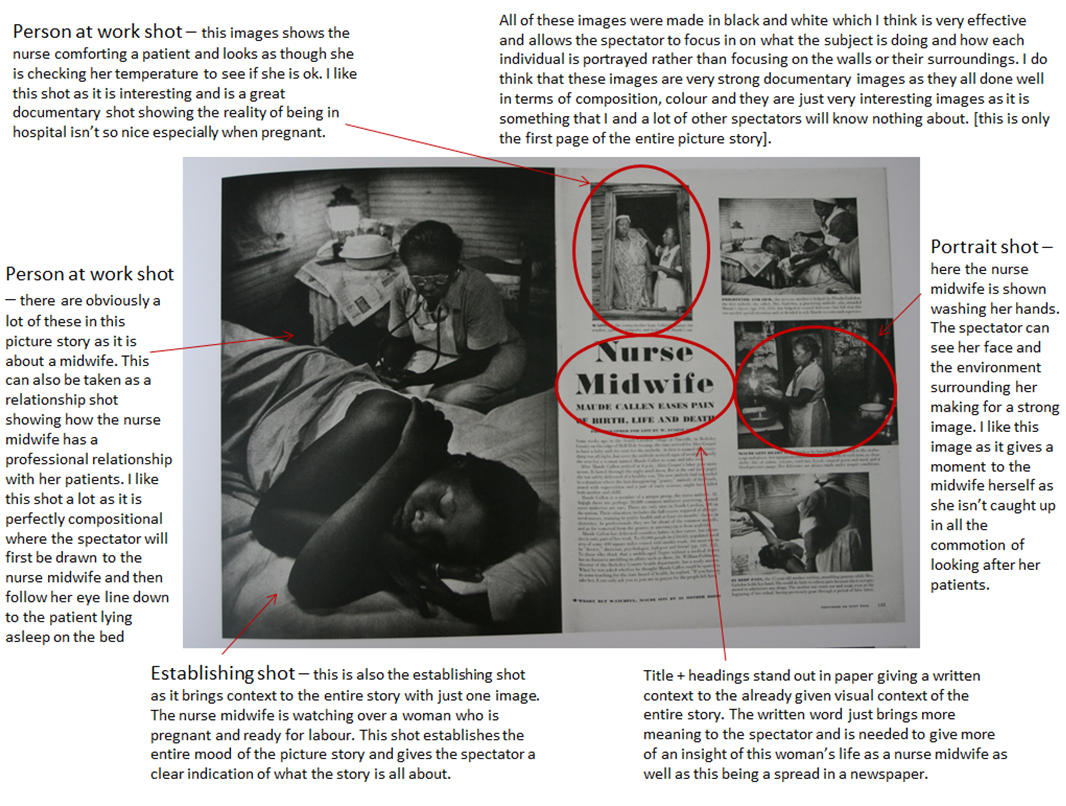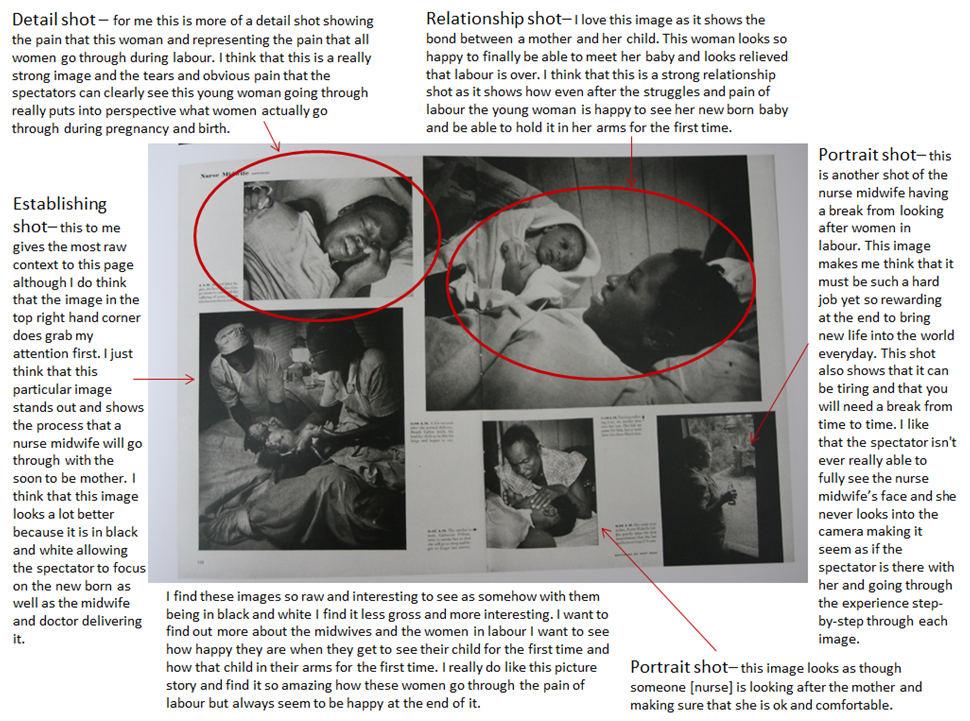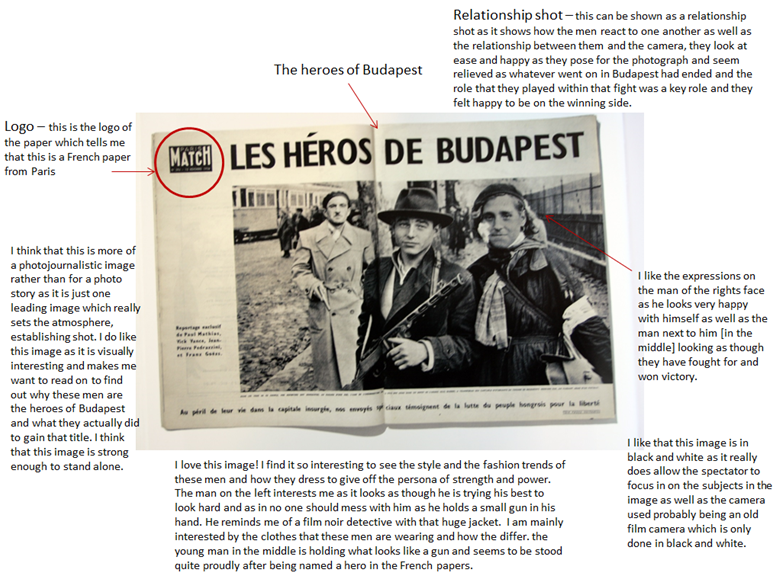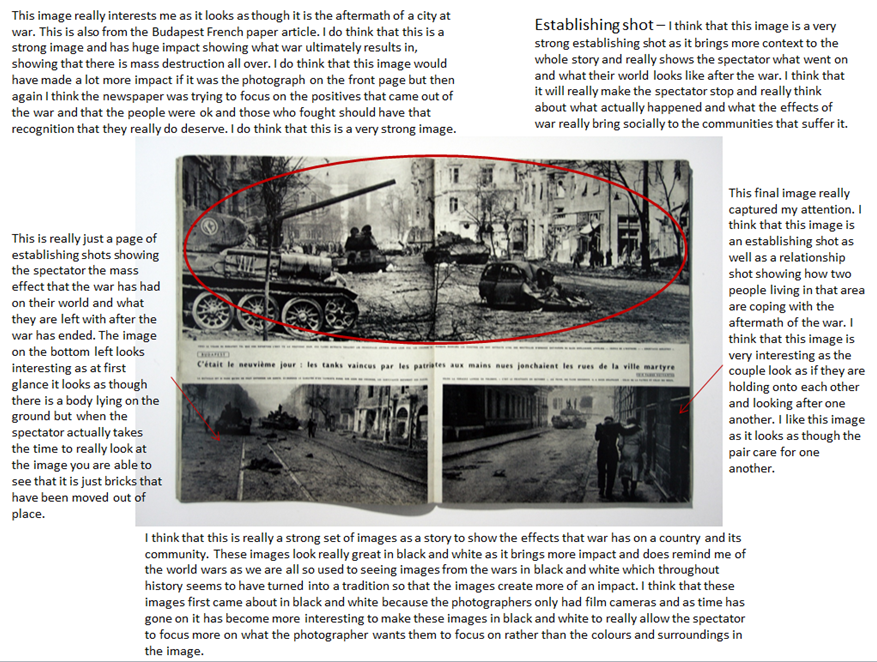When creating a picture story there are 6 or 7 different types of images that are usually present in a traditional picture story. Some of these are a person at work shot, relationship shot, establishing shot, detail shot, environmental portrait, formal portrait and an observed portrait. These images make up a traditional picture story which is usually created from these different types of images, including a title about what the images are about and text which would be placed by the images giving context about them. A person at work shot is an image of someone at their job or doing something which involves an action, a relationship shot can be of two or more people which shows the relationship between two or more people and shows a connection between them. An establishing shot is usually the biggest image that is on the picture story, this image is the photo that by just looking at it, it should tell you what is happening, this image is usually from further away so it gives some context of the scene, in addition the establishing shot can also be another type of image, for example a relationship shot as well. An environmental image is a photo of the setting which tells the viewer the location of where the image have been taken, another type of images is a formal portrait, this is where the person you are taking the image of is under your control and you have told them what to do when you are taking the image. Usually you can take a better image when you have a good relationship with the subject. An observed portrait is when the subject is not aware that you are taking the image of them, this usually can make for a more interesting image as it has no rules for taking this image so it is completely unique.
Person at Work • Relationship Shot • Establishing Shot • Detail shot • Environmental Portrait • Formal Portrait • Observed Portrait
When taking these photographs
When taking a person at work shot it is important not to rush into taking these images and move around the subject taking to them and asking them questions to engage in whatever the activity they are doing. When taking a relationship shot it is somewhat essential to start off with some small talk with the parent or child who you are photographing to engage the relationship. Taking these images will need a lot of photos taken as it takes time and concentrated effort to show the relationship between people and get the desired image. When taking an establishing shot it is important that this image catches a viewers attention as it is essentially the first image that people will look at and it will set the scene for all of the other images that are on the picture story. Considering light, composition elements of animation and other elements of visual interest is important to catch the attention of the viewers. When taking a detailed shot these image are often overlooked but it can sometimes be vital to a picture story. When taking a formal portrait you decide how you want the lighting to look in the image, the persons posture and distance, however this should still show the subjects personality through the image. However this sometimes ends up having an opposite effect and showing the personality of the photographer, or the view the photographer has on the person and not actually their personality. When taking an environmental portrait it is essential to get the background in as well as the person, which you should be able to see their face, this is show it shows what they are doing and reveals a lot more about the person through the photograph. In an observed portrait there are no rules when taking one, this is because these images are usually spontaneous and therefor it is not easy to set up the images and get them how you as a photographer wants them.







